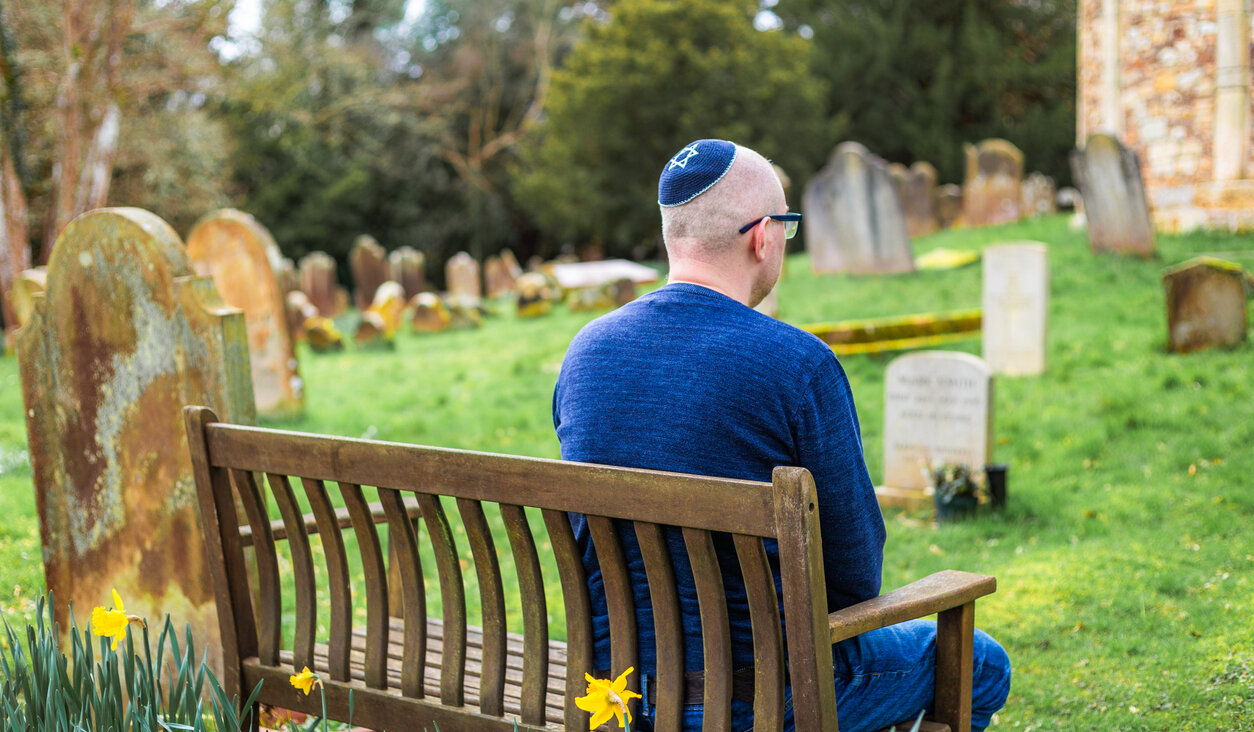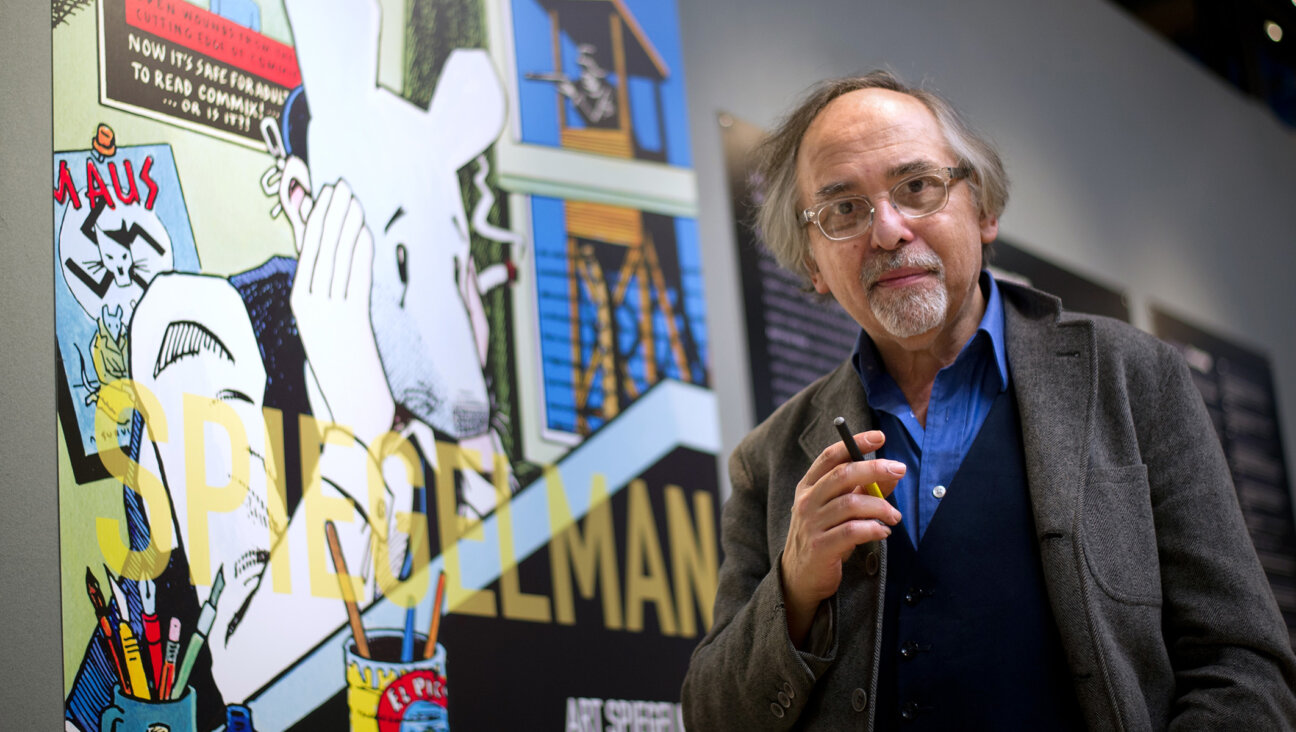Vilna Synagogue Is Rare Gem in Tony Boston Neighborhood

It Takes a Vilna: Boston?s Vilna Shul, designed in 1919, features an unusual number of skylights. Image by Menachem Wecker
The 10-minute walk from Boston’s Charles/MGH Red Line stop to the Vilna Shul meanders along narrow tree-lined streets with picturesque streetlamps and houses in the ritzy Beacon Hill neighborhood.
It’s easy to walk right past the synagogue, which is set back from Phillips Street behind a fence with a Star of David, as one hurries along to Freedom Trail stops, such as the African Meeting House (later a synagogue), the John Coburn House, and the Lewis and Harriet Hayden House. But however uneventful and unpretentious the synagogue’s façade is, its interior is well worth a careful look.
“I find that many of my Boston friends — of whatever religion — have not heard of Vilna, or even if they have, have never visited,” says Samuel Gruber, a cultural heritage consultant, scholar and frequent blogger on Jewish art and architecture. “Nationally, the Vilna Shul has never gotten the type of media exposure of Touro Synagogue in Newport, Eldridge Street Synagogue in New York, or even of Wright’s Beth Sholom in Elkins Park, Pa.” (Having grown up in Boston, I’m ashamed to admit I wasn’t familiar with the Vilna Shul either until Gruber and Barnet Kessel, the synagogue’s executive director, gave me a tour.)
The last time Gruber, who is author of the 2003 book “American Synagogues: A Century of Architecture and the Jewish Community,” saw a mention of the shul in the New York Times was in Gustav Niebuhr’s 1996 article “Bit of Boston’s Jewish Pride Is Revived,” and he has seen only “passing references” in national Jewish media. “Those three historic and architectural landmarks are now iconic and suck up most of the oxygen in discussions of American synagogue architecture — even among Jews,” he says.
The synagogue, whose name derives from the immigrants from present-day Vilnius, Lithuania, who founded it, and was designed in 1919 by Jewish architect Max Kalman, has several noteworthy features. The central arrangement of the bimah, the podium upon which the Torah is read, is a tradition with which most American Jews are unfamiliar, Gruber says.
The synagogue features an unusual number of skylights. ‘Light is both symbolic and practical, especially when it falls on the Torah on the bimah when it is publicly read,’ Gruber notes. It includes a second-floor sanctuary with a women’s section whose floor slopes down from the back wall — which is decorated with illustrations of Rachel’s tomb and the Cave of Machpelah — to meet the men’s section.
Gruber thinks the topography of the land dictated the synagogue’s layout, although he says he isn’t sure why a third level for the women’s gallery wasn’t constructed. “Would the cost of stronger foundations or walls have been too much?” he wonders. “I doubt there were local height limits.”
Kessel, the shul’s executive director, also isn’t sure why the women’s section is on a slant. “The slope of Beacon Hill is up from the front door to the back of the building,” he says, “so we can’t use the elevation of the hill as a reason.” Research has shown that there is earth underneath the women’s section, so perhaps its structure was dictated by cost, convenience, construction technology, or existing landscape conditions, Kessel says.
What is clear is that the building, which stopped functioning fully as a place for prayer in 1985, has been divisive. As Rachel Gross, doctoral candidate at Princeton University, explained in a December 17, 2013 talk titled “Ghosts in the Gallery: Nostalgia and Authenticity in Historic Synagogues Used as Heritage Sites” at the Association for Jewish Studies’ annual conference in Boston, the synagogue’s 87-year-old president Mendel Miller was mugged while setting up for High Holiday services in 1985. At the time, membership at the Vilna Shul was only three people.
“The attack cemented Miller’s reasonable decision to disband the congregation, sell the building, and give the proceeds to charity,” Gross said in her talk. Communal leaders in Boston, who hadn’t raised a finger to try to help the struggling synagogue until they realized they would benefit financially from the sale, rushed to block the sale, Gross explained. The president of the Charles River Park Synagogue, Allan Green, told the New York Times in 1989, “We feel that designating this shell of a building [as a monument] is really to no fruitful purpose.”
“In his [Green’s] view, [echoing] the common critique that museums and heritage sites serve only as markers of historical respect and do not serve the needs of the present,” Gross said.
Those supporting the synagogue’s preservation won out, and today, staff at the shul are working on plans to restore both the building and its artwork to its 1919 state, according to Kessel. Although the building was updated during its first seven decades of existence, it underwent significant restoration in 1989 (when it was nearly a condemned building) and in 2000, when the murals on the back wall of the women’s section were restored.
“The building represents the last immigrant-era synagogue left in the city of Boston out of more than 50. All but ours have been lost to disaster, re-purposing, and/or urban renewal,” Kessel says. The Vilna Shul, whose full name today includes the subheading “Boston’s Center for Jewish Culture,” functions currently as a cultural and educational center, a historical landmark, and a museum.
It’s hard to shake the feeling of sadness that comes from seeing objects that were created to be used in a religious context retired from use in a synagogue-turned-museum, but there really are some treasures in the Vilna Shul collection, including the wall and ceiling illustrations, old Yiddish posters (such as one for the ladies auxiliary), well-used lecterns, and an old sign advertising prayer times (daily services were then held at 6:30 a.m.). The sanctuary also features a bar in front of the ark, which may have designated a space for mourners to congregate when they recited Kaddish for loved ones’ yahrzeits.
Perhaps most noteworthy is the ark, which is beautifully adorned with sculpted lions, an eagle, a crown, and two hands configured in the priestly blessing popularized by Star Trek’s Spock. The ark features stunning wood carvings on its doors and on the columns surrounding those doors. Kessel parted the curtains for a moment to reveal illustrations of clam shells, which however unkosher and however much of a chutzpah they are in a synagogue, are undeniably a nice New England touch.
Menachem Wecker is a freelance writer in Chicago and former education reporter at U.S. News & World Report.
A message from our Publisher & CEO Rachel Fishman Feddersen

I hope you appreciated this article. Before you go, I’d like to ask you to please support the Forward’s award-winning, nonprofit journalism so that we can be prepared for whatever news 2025 brings.
At a time when other newsrooms are closing or cutting back, the Forward has removed its paywall and invested additional resources to report on the ground from Israel and around the U.S. on the impact of the war, rising antisemitism and polarized discourse.
Readers like you make it all possible. Support our work by becoming a Forward Member and connect with our journalism and your community.
— Rachel Fishman Feddersen, Publisher and CEO





















